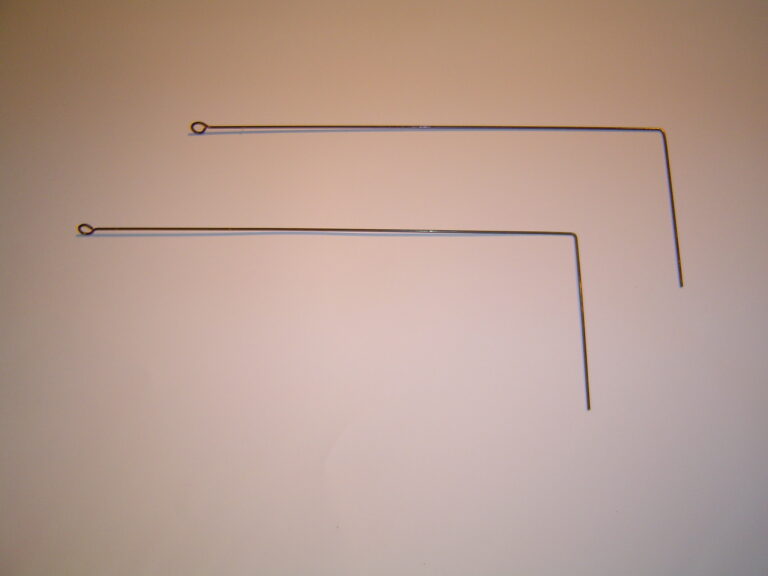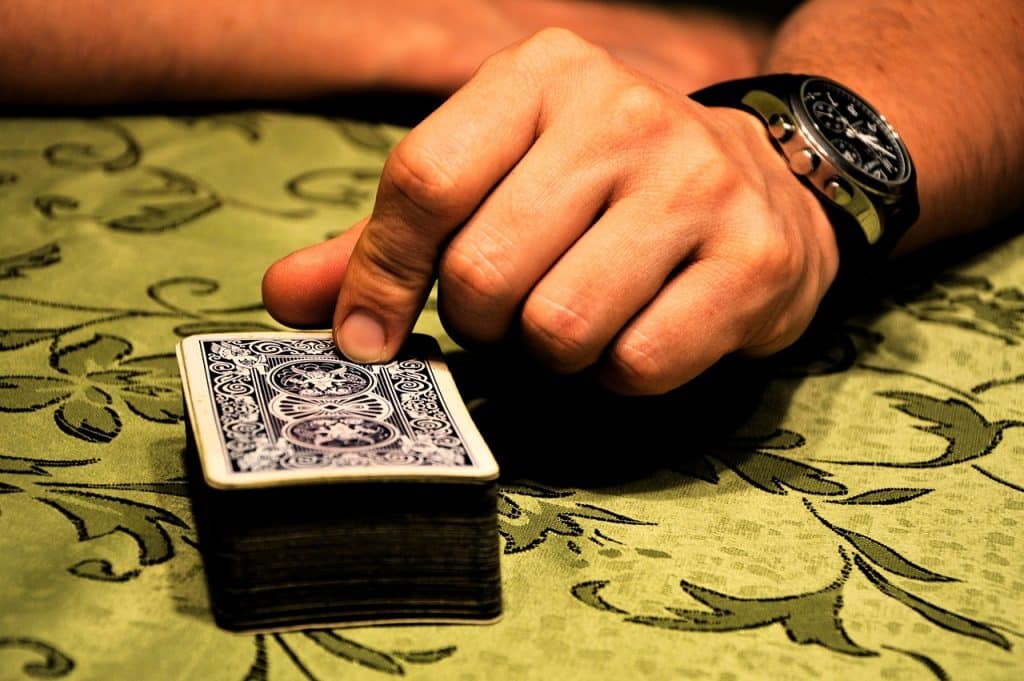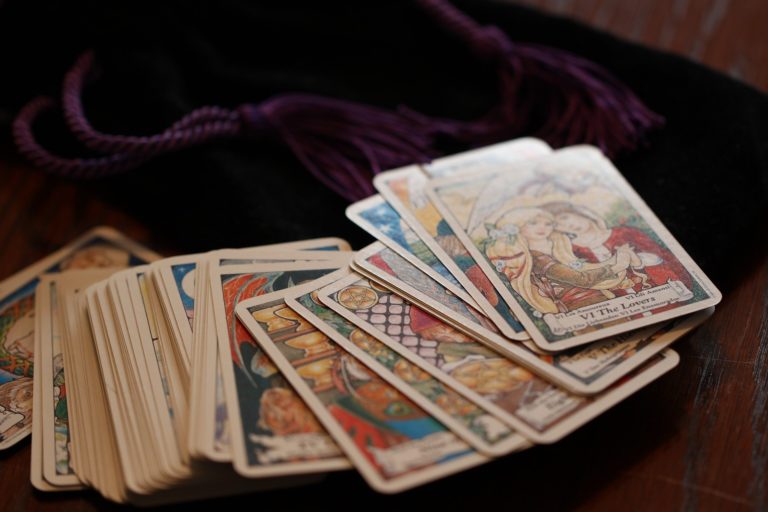This article originally appeared in The Skeptic, Volume 3, Issue 1, from 1989.
James (The Amazing) Randi is a professional magician who for more than thirty years has investigated claims of the paranormal He is a founding fellow of the Committee for the Scientific Investigation of Claims of the Paranormal, and has written a number of books on his investigations. He has toured extensively, lecturing to university audiences throughout the United States and Canada.
On Friday 21 October Randi was a guest of the Manchester Skeptics and spoke at a public meeting held at the University of Manchester. What follows is an edited transcript of his lecture, transcribed by Frank Koval.
I thought I would begin by explaining to you a little of the terminology that I will be using this evening. You will hear the word skeptic used a great deal tonight. Many people look upon skepticism as a very unhealthy point of view, but we would buy fewer fake gold bricks if we were all a little more sceptical!
But you can only be skeptical to a certain point. Skepticism does not mean that you disbelieve every bit of evidence that comes your way. Suppose that I said that I have a goat in the backyard of my home in Florida. Now, it is a long way to go there, so you could phone up a friend in Florida and ask them to look in my backyard and phone back to tell you whether or not I have a goat there. You would not need a great deal of proof in this case. You do not need to be highly skeptical of the claim especially as I do not seem to have anything to gain by claiming that I have a goat in my backyard. But, if I say that I have a unicorn in my backyard, then we have a very different problem. First of all, experts in unicorns are very hard to come by! Secondly, if you sent somebody around to look in the backyard, he may well say it looks like a small horse with a horn coming out of its forehead. Now I would want a piece of that horn! I would want more proof than someone just looking over the fence and saying, ‘Oh yes, that’s a unicorn’, because tor such an unusual claim we need very strong evidence.
We all have to be wary of making too many assumptions in our lives. Many people sitting here tonight are looking around smugly thinking, ‘Oh, I don’t make too many assumptions,’ but we all make assumptions every moment of our lives. Suppose that you are walking along in the street and come to a traffic light. You look up and see that it is on red. You know the rules and wait until it is on green and then assume that you will have time to cross the street without being run flat by the traffic. You make that assumption based on the knowledge of the traffic system and your past experience of timing in getting across the street. Such assumptions are necessary in everyday life; if we did not make them we would become catatonic. But there are assumptions we make based on trust in such things as the media, books, films and television programmes. That trust can sometimes be misplaced. You know the expression that they would not print it if it were not true. But that expression itself is not true.
As a matter of fact, ladies and gentlemen, you have all being making an assumption while you have been sitting there. At the beginning, Toby Howard stepped up to this lectern to introduce me and you heard his amplified voice somewhat booming. [Then, Randi moved away from the microphone on the lectern, traced the cable back to where it should have been plugged in, and waved the plug in the air. The microphone was not connected! F.K.] You see. you all made a basic assumption. You assumed that I was using that microphone. [In fact, Randi then showed that he had been using a lapel microphone but that he had fixed it on the inside of his coat, and that explained the rather muffled sound we were straining to hear. Of course, it worked perfectly well when it was clipped on the outside of his lapel. We were very much relieved! F.K.] It was a very simple assumption. It was quite harmless and did not cost you anything. But there are other assumptions that you can make in your life if you are not skeptical enough that can cost you a great deal; indeed, they could cost you everything.
Some people label me as a debunker, but I do not accept that. That would mean that I would have the luxury of walking into a situation and making a pronouncement even before looking at the facts with the attitude, I know it is not so and I am going to prove that it is not so.’ That would be a very biased way of looking at any situation. No, I am an investigator and I try to go into an investigation with an open mind. Well, I say I try, but I am not going to deceive you any more than I deceive myself. In fact, I do not have a totally open mind when I look into such things. The reason is that I have been at it now for more than forty years and in that time, I have never seen a single example of a paranormal, occult or supernatural event that I have not been able to come up with a rational explanation for. That is, when I have been able to get close enough to them.
I carry around in my pocket at all times, and available for inspection, a cheque for $10,000 that I made out 24 years ago on a radio programme in New York City when a parapsychologist asked me to put my money where my mouth is. I did this a little irrationally because I did not necessarily have $10,000 to wave around at risk, but it has been gathering interest in the bank ever since. It is available to anyone who can prove their paranormal claims. That does not include people who say they can read minds, assuming that I would just believe them.
That reminds me of the story of the man who was taken to court accused of murder. Eighteen people saw him shoot a man in the street and there were photographs and video tapes of it. The appeal for mercy after he was found guilty included, ‘Your honour, they only produced eighteen people who saw me do it. | can produce 500 people who did not see me do it.” That is not the same as seeing him not do it. You cannot prove a negative. When I am called into an investigation, people often ask me if I can prove some phenomenon is false. I say that I cannot, but it is up to them to prove that it is true.
I would like to share with you a few of the experiences I have had in my travels around the world. One of them was a trip that [ recently made to China. I was invited there along with a few of the other members of the Committee for the Scientific Investigation of Claims of the Paranormal. This organization has become respected throughout the world for looking into such claims. The Chinese government invited us over there because the popular press there had reported that some children were said to be able to read Chinese characters written on small pieces of paper and folded up very small. They read these pieces of paper with their armpits! Now I am no physiologist, but I do not think the optic nerve goes that far. I would also be interested in the focusing device. One little lady had a particular talent. Not only could she read with her armpit, but she could also read the little piece of paper when it was stuck in her ear! I suppose the ear is not that far from the eye. But then, she could also read the papers if she sat on them.
Remarkable claims! Now, how did these people go about reading the pieces of paper with their armpits? We have to remember that kids can be clever! The papers were prepared in large numbers and folded up for the children to choose one. If I were conducting the experiment, I would use just one paper at a time. However, the kids would take a paper each, place it in the armpit and go and sit down. After a while, one of them would ask to leave the room. He would leave his paper behind—and this could be checked; it would be the right one. Later, the child would return, take back his paper and sit down again.
What really happened was that the children sat in a row with their arms folded. This meant that any one of them could use his fingers to remove the paper from the armpit of the child next to him. He could then go out of the room, read it secretly and return. Then, he would pass the paper back to the other child’s armpit and secretly tell him what he had read. In the cases of the pieces of paper in the ears, the children simply took more than one piece of paper. One went in the ear and the other was used tor secret reading. At a suitable point, the paper which had been read could be switched for the one in the ear. It is an old technique used by spiritualists.
Now there is a gentleman now living in the UK— his name is Uri Geller—you might have heard of him. He is a conjurer from Israel who came to the United States. He could do wonderful things like breaking and bending spoons by just looking at them, reading the contents of sealed envelopes and & number of other tricks that I remember reading on the backs of cereal boxes when I was a kid. [Randi then proceeded to demonstrate very effectively how he could bend and break borrowed spoons with minimal contact while they were being held at each end by a member of the audience. F.K.] Such tricks are very easy to do but many people including scientists may be fooled by them as do not know how they are done or are not looking for them.
[Randi’s next demonstration involved the use of a spectator’s wrist watch. The time shown on the watch was noted and it was placed face down on the spectator’s hand. In due course, when the watch was examined again, the time was seen to have changed by some 45 minutes. Randi demonstrated how, with suitable misdirection, he had been able to twist the winder in the action of turning the watch face down. F.K.] Any watchmaker will tell you that almost every clock or watch that is taken out of a drawer where it has been left for years will start to tick and work again because the balance wheel will start to work again.
Mr Geller used to say when taking part in radio and T.V. programmes, ‘If you have a watch which is not running, bring it to the television set. If it begins to run, call the station.’ Notice that he does not say that they should ring the station and tell them whether or not the watch is running. Then, he says, ‘I told you to bring broken watches to the radio or television set.” Note that he has now changed the emphasis and given a different impression of what he is doing. Anyway, the result is that the switchboards are always jammed. The problem with Uri Geller is that he cannot perform his miracles under properly controlled test conditions.
Again, back in China, a parapsychologist there put broken matches into sealed boxes and gave these to “gifted subjects’. He later found that when the boxes were opened again that, lo and behold, the matches had been restored. We tried some of the tests and, when the subjects returned the boxes, and we took off the Scotch tape, on it we found pieces of straight black hair, bits of grass and grass seeds. The-parapsychologist said that this was part of the miracle! Quite often, he found, foreign objects appeared under the tape. Not only that but, when we opened the box, the match had been restored. The broken matches originally placed in the sealed boxes all had green heads, but the restored match had a red head. But, did that worry the parapsychologist? No! Never abandon a theory. Instead, throw out the facts when they do not fit! He said that not only had the match been restored, but it had changed its colour as well!
In Australia, a channeller says that she can channel the spirit of Ramtha. Can we prove that this is wrong? No! No-one can prove a negative, but she can fill a theatre and vast numbers of people are prepared to pay $A600 to see it. She visited Australia for less than 48 hours on a tourist’s visa and, given the size of her audience, likely came away maybe as much as $A225,000. She got that from charging $A600 a seat and filled the hall. Some of the audience came from as far away as Indonesia. About two weeks after that, a gentleman named Carlos appeared at the Sydney Opera House. Carlos is an artist of Spanish origin from the United States whose original name was Jose. He attracted a substantial crowd who were prepared to pay $A20,000 for a crystal which supposedly came from Atlantis. I was there that evening and the only difference between the two channellers was that she made about $A225,000 whereas Carlos made nothing because he is in fact my close associate. I had received a call from the 60 Minute programme in Australia and they asked me about these channellers. They asked what could be done given it is not possible to prove a negative. I replied that we could create a channeller for them. I decided to use Jose and we spent about two weeks preparing for the performance and eventually Carlos appeared at the Sydney Opera House where he proved the point that anyone with the right preparation could have the same effect.
Some years ago, a young man called Ted Serios, a bell-hop in a Chicago hotel, claimed that he had the ability to pick up a Polaroid camera, put a small tube made out of black paper around the lens, and take psychic photographs. He would focus the camera to infinity and aim it at his head. When the film was developed, there would be a picture on it of something that was not even in the room. In fact, he was using a small piece of photographic slide which he secretly held in front of the camera lens. He was investigated by psychiatrist Jules Bisenbud who claimed in a book that Ted had psychic powers. On one occasion, he asked Ted to produce a picture of the submarine Thresher which was in the news at the time as it had been lost at sea with the lives of all those aboard. It turned out that the picture Ted produced was of Queen Elizabeth II of England. But, Jules Eisenbud saw a connection between the two. He reasoned that, in Latin, The Queen is referred to as Elizabeth Regina. The last two letters of Elizabeth and the first two letters of Regina give us THRE, which are the first four letters of THRESHER! Now, what about the last four letters, SHER? Well, the Queen is a sort of mother figure for many people. The French for mother is la mère, and submarines operate in the sea. The French for the sea is la mer. That leads us to Ted’s mother, whose name turns out to be Esther, which contains (amongst others) the letters SHER! Now, how can you deny logic like that!
For the last few years I have been investigating what is, quite frankly, a racket. Religious broadcasting is on television in the United States for 24 hours a day, seven days a week. You will be able to see fakers who but an hour or half an hour of time. Peter Popoff is one who goes around the audience of his show, walks up to somebody in a wheelchair and addresses him as Bill. ‘Yes,” comes the reply, ‘my name is Bill.” After assurances that the two have not met or spoken to each other, Popoff says, ‘Now stand up and walk. Dr Jesus has healed you. Praise the Lord’ The man gets up and is able to walk. Now, how was this done? What viewers do not know is that two hours before the performance, Mrs Popoff went down into the audience. She saw Bill walking around and told him to sit in a wheelchair so that the Rev. Popoff would know that he needed healing. As she was talking to Bill, the discussion was being relayed to Peter Popoff who was making notes. During the performance, Mrs Popoff is up in the booth watching a television monitor showing the proceedings and relaying information to her husband by radio. He has a tiny radio receiver in his ear.
Faith-healing is a racket; it is the most disgusting thing I have ever come across. In the lobby outside the studio, we found people ill and even dying. In some cases, people had actually sustained injuries when they had run to the stage, the temporary rush of adrenalin anaesthetizing the pain. Reverend Popoff and his wife were raking in over $1 million every month, tax-free. They had been doing that for several years. After my exposure of him on the Johnny Carson Show, he was bankrupted.









